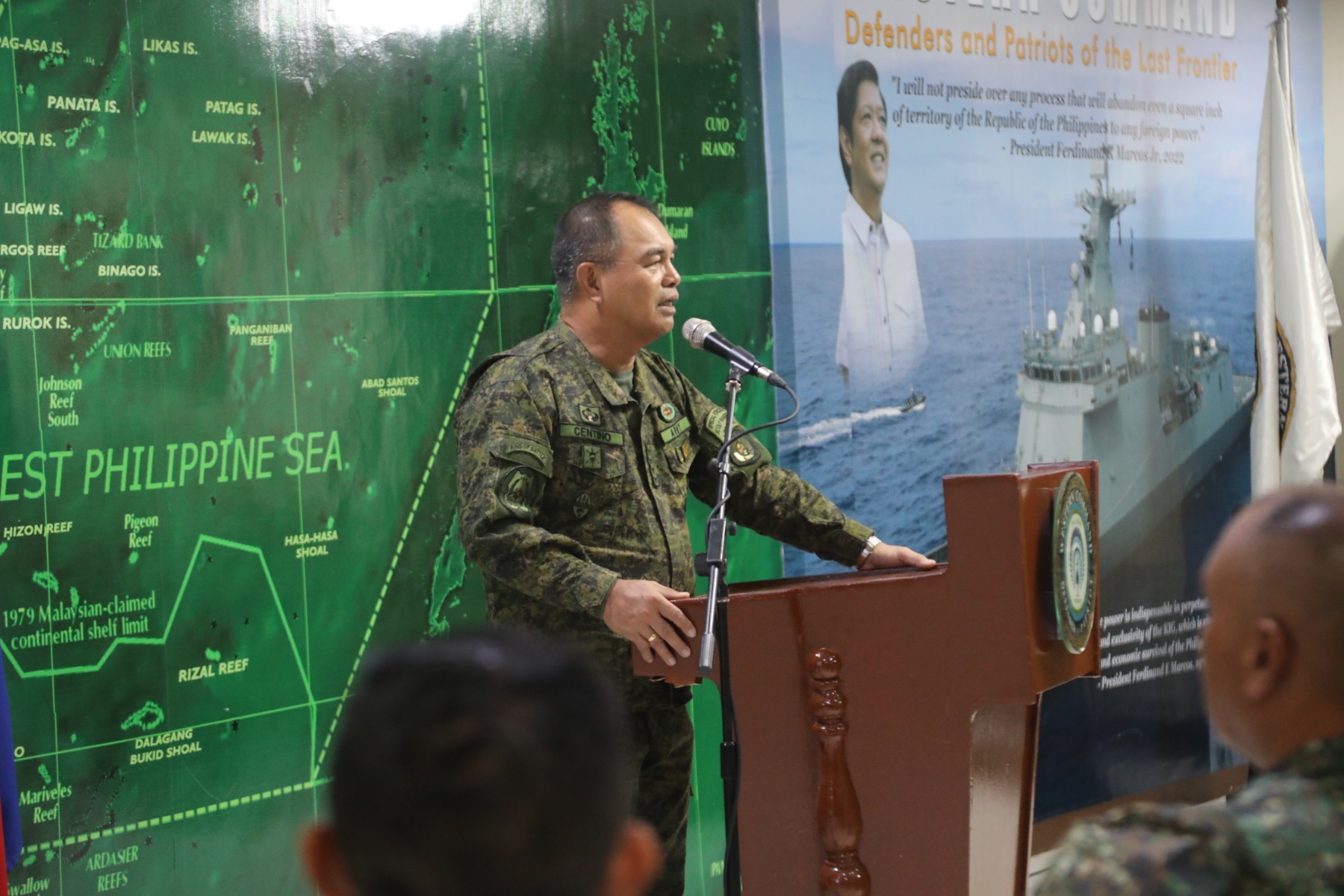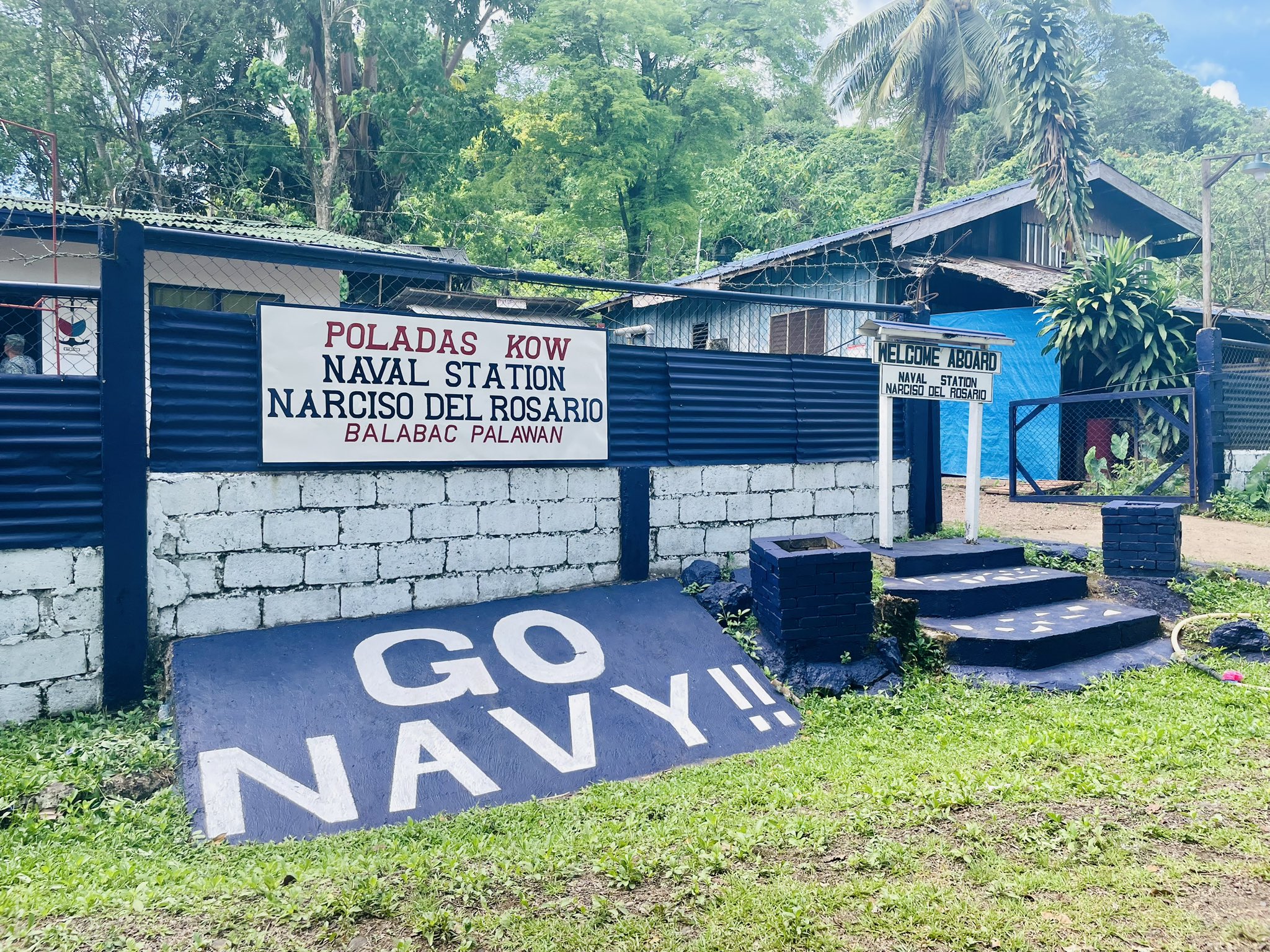
Philippine defense officials visited Palawan last week to inspect new sites that will host U.S. forces as part of the defense pact between the two countries.
The Philippine delegation, led by Armed Forces of the Philippines Chief of Staff Andres Centino, visited the province’s Enhanced Defense Cooperation Agreement sites, which are designated Philippine military bases, but allow U.S. access. This access comes in the form of pre-positioning equipment, construction of facilities, and hosting American troops.
Centino visited three sites, including two located on Balabac. The island was announced as the location for one of the four additional EDCA sites last month and is the only EDCA site directly adjacent to the South China Sea.
While the island lacks major facilities, – it only hosts a small naval and littoral monitoring station – plans to upgrade Balabac to better accommodate Philippine and U.S. troops include the construction of the 3-kilometer-long Balabac Military Runway and a series of projects at Naval Station Narcisco Del Rosario.
Balabac’s New Air Base
LOOK: AFP chief of staff Gen. Andres Centino inspects the ongoing construction of the Balabac Military Runway in Palawan.
The project is funded under the TIKAS Program, a partnership between the DND and DPWH. | via @biancadava pic.twitter.com/zeaTzS5q4A
— ABS-CBN News (@ABSCBNNews) May 17, 2023
Construction started on the Balabac Military Runway prior to the island’s selection as an EDCA site, with state media reporting that construction on the air base began in 2019. The runway is also meant to be dual use between civilian and military aircraft, similar to EDCA projects at Mactan–Benito Ebuen and Antonio Bautista Air Bases.
Progress on the runway has been slow, with a lack of funding pushing back the completion date of the project. This issue seems to have been resolved with the Philippine Department of Public Works and Highways’ TIKAS program, which uses public funds to construct military infrastructure. As of this recent visit, the latest projection for the runway’s competition is by March 2024 with a cost of around $3.1 million.
This week, Centino also described the air base as “very strategic,” highlighting the need to detect foreign and friendly vessels transiting between the South China Sea to the west and the Sulu Sea to the east.
The Balabac Strait has been used by both Chinese and U.S. naval vessels, with Chinese ships sailing through the 50-kilometer-wide chokepoint in 2019. U.S. vessels have also used the strait to access the South China Sea, most notably with the transit by the Nimitz Carrier Strike Group in 2020. Projection of maritime domain awareness capabilities from the air base was heavily emphasized in a May 17 Philippine military press release, which stated that the runway will allow for aircraft to “detect intrusions in the strategic maritime routes.”
Other projects found on the DPWH’s awarded contracts page show further investments relating to the air base, including a command and control building. A Humanitarian Assistance and Disaster Relief warehouse, barracks for personnel and other facilities are to be constructed as part of future EDCA projects.
Naval Base Developments

The delegation also visited Naval Station Narcisco Del Rosario, which is located on the other side of the island from the airfield. The base can only accommodate smaller Philippine Navy patrol boats, but during Centino’s visit, a more ambitious plan called for the construction of a causeway and pier.
This infrastructure could accommodate larger vessels and amphibious transports, as evidenced by the diagram of the project depicting a frigate or destroyer-sized ship as a reference for the scale of the pier.
Other notable projects at the naval station include a beach ramp and staging area, which Centino said would allow for easier access to construction materials for future EDCA projects.
Like the runway, the naval station’s projects began before EDCA and are funded by the Philippine government. The projected completion date for the beaching ramp and pier are 2024 and 2026 respectively, with both totaling around $5.5 million.
Naval Station Narcisco Del Rosario’s upgrades will allow for a closer port for Philippine vessels to sortie out to the South China Sea compared to their current port at Puerto Princesa.
A similar project in the province is being undertaken by the Philippine Coast Guard for a Vessel Support Facility in Bataraza on the southern tip of Palawan. The PCG signed a Memorandum of Understanding with local authorities last summer for the land on which this future base will reside. In a September media release, the PCG stated that the South China Sea adjacent facility “will serve as the Forward Operating Base to support Coast Guard vessel operations in their area of responsibility.”
The delegation also visited completed EDCA projects at Antonio Bautista Air Base, one of the five original sites designated in 2014. Centino viewed an ammunition warehouse, aviation fuel storage, and a command and control center.
Centino told the press that Philippine forces were using the facilities and that American forces can access them if necessary. U.S. Army’s Multi-Domain Task Force conducted a HIMARS Rapid Infiltration drill at Antonio Bautista during Balikatan 2023.
Renewed Security Ties

An expanded EDCA, recent large-scale exercises, equipment transfers and defense talks have shown a shift by the Philippines under the Marcos administration toward the U.S. for increased security ties.
This year, Washington has committed to the transfer of six patrol boats, including two of the former Navy’s Cyclone-class Patrol Ships, and three transport aircraft. The Philippines has also shown interest in many American systems, such as F-16 fighter jets, HIMARS and Javelin, to modernize its own military.
The two countries established bilateral defense guidelines last month during Marcos’ official state visit to Washington. These guidelines aim to modernize the alliance, with a focus on countering grey-zone tactics and reiteration that an attack in the South China Sea will activate mutual defense commitments.
Joint Philippine-U.S. patrols in the South China Sea are set to begin later this year.





